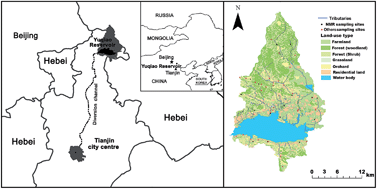Land use as an explanatory factor for potential phosphorus loss risk, assessed by P indices and their governing parameters
Abstract
The total level of phosphorus (P) and the distribution of P pools in the topsoil are significantly affected by the excessive application of mineral and organic fertilizers connected with intensive agriculture. This leads to an increased potential risk for P loss, and then contributes to freshwater eutrophication. Soil test P (STP), P sorption index (PSI) and degree of P saturation (DPS) are commonly applied as proxies for assessing the risk of P loss. Although conceptually based, the empirical relationships between these operationally defined proxies and the actual P flux exhibit large spatial variations. Herein, a comprehensive synoptic study and monitoring of soil has been conducted in a watershed in north-eastern China. A set of conventional indicators for soil P loss risk were measured along with the main P pools, P sorption indices, texture, organic matter, as well as Fe and Al oxides and other mineral compositions. Moreover, detailed soil P speciation was conducted using phosphorus nuclear magnetic resonance (31P NMR) spectroscopy. In addition, phosphatase activities in the soils were determined for each land use soil category. The results reflected that the soil content of total P, total inorganic P and STP increased significantly following the order of increasing management intensity. STP, being strongly coupled to the application of P fertilizers, was a strong explanatory factor for the spatial differences in DPS – both between and within different land uses. The dominant inorganic and organic P species in the soils were orthophosphate and monoester-P, respectively. Their contents were oppositely correlated with the degree of management influence, with the amount of orthophosphate positively related. Alkaline phosphomonoesterase (AlP) represented the highest activities among the four representative phosphatases, i.e. enzymes that hydrolyze organic P – releasing labile orthophosphate. Orchard soils were found to contain the highest levels of monoester P as well as high AlP activities. This indicates a strong capacity to produce labile orthophosphate. Our results suggest that the type of land use can be employed as a general explanatory factor for considering the potential high risk of loss of P. Regionalized P loss parameters will further improve the accuracy of risk assessment.


 Please wait while we load your content...
Please wait while we load your content...